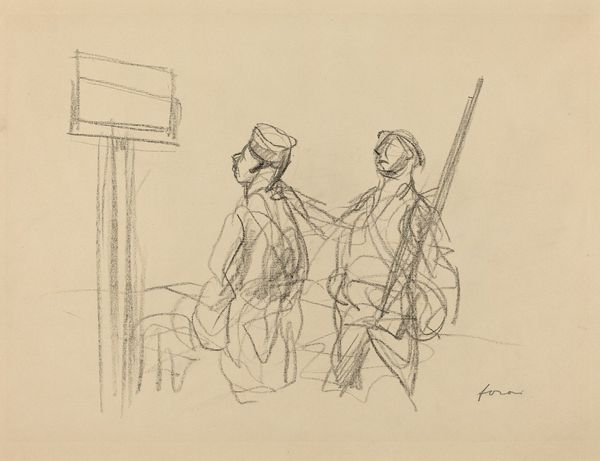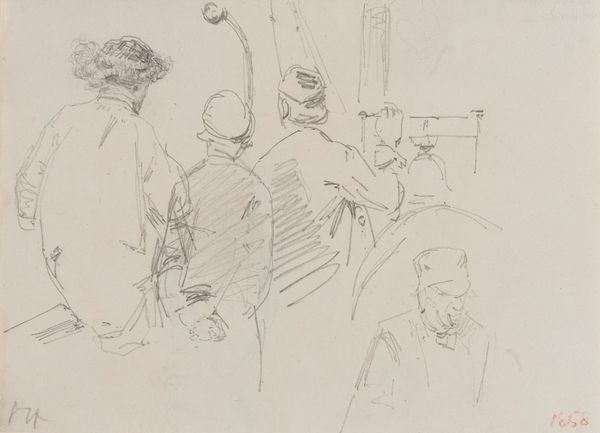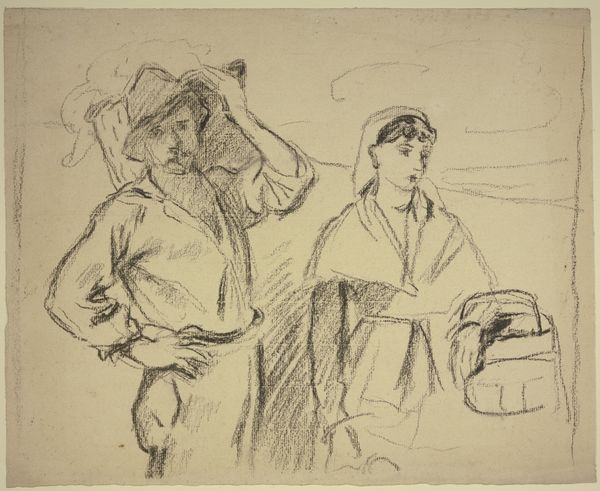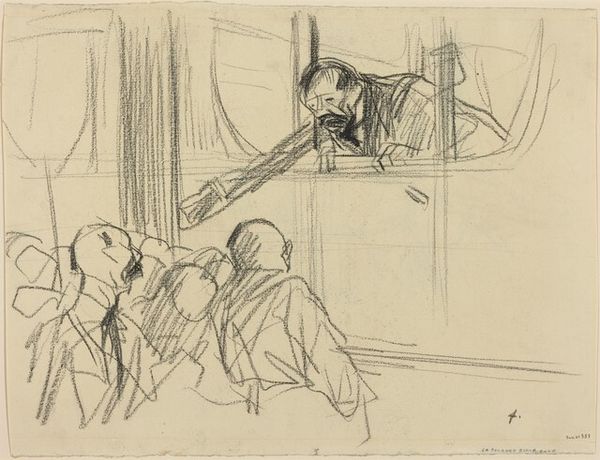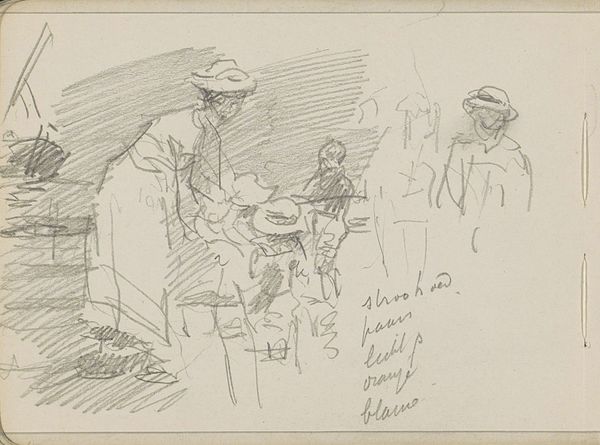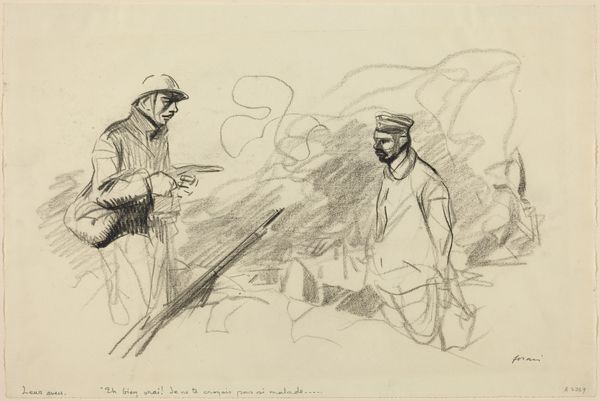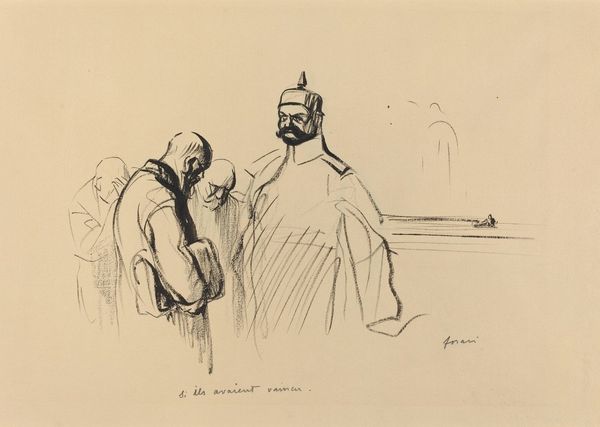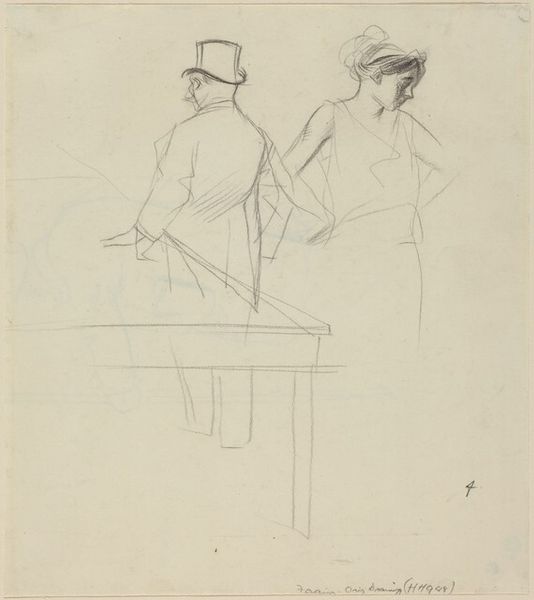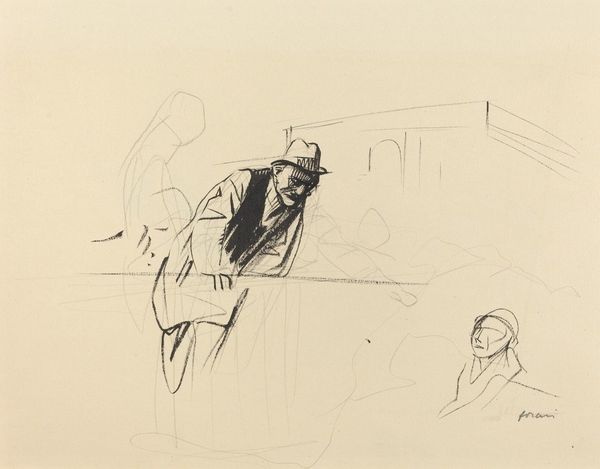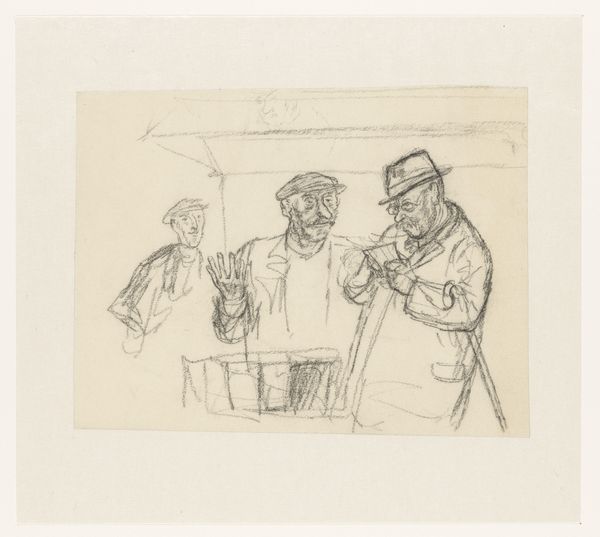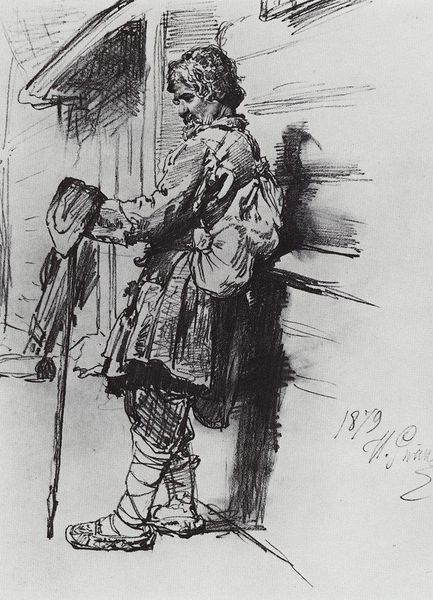
Copyright: Public Domain: Artvee
Curator: Jean-Louis Forain’s pencil drawing, titled "Sur le Rhin - maintenant c’est l’arriere," created around 1918, captures a fascinating moment in time. It seems incredibly spontaneous. Editor: Spontaneous is right, I mean, look at those rapid lines! There's an immediate feeling of weary optimism. Something about the angle of their chins pointing towards the sky gives it that feeling. Curator: Optimism, despite the clear signs of war around them. Consider the context of 1918—the final year of World War I. This drawing encapsulates the human element of war through two figures situated near a sign that reads “Noyon.” Editor: The use of a pencil really softens what could be, should be, a very grave and disheartening image of war. Instead, we get a human, almost funny rendering of these people who seem caught between hoping and waiting. Curator: It does soften the image, yes, and consider how Forain uses line to construct not just form but also mood. The stark contrast between the heavier shading defining the man with the pipe and the light, almost ethereal lines delineating the woman invites a sort of visual comparison. He seems grounded while she’s floating on the very edge. Editor: Oh, yes! It's all in the contrast. You feel the weight of the man's existence while she is almost free from everything! A contrast that adds a narrative, maybe of survival, memory, or some inner hope for an uncertain future. Also, it makes it deeply engaging. Curator: It becomes even more fascinating when considering the caption below the image; “-maintenant c’est l’arriere” translates to “-now it’s the rear.” Coupled with, “c’est comme ça en français?” "oui, et pour longtemps!", that’s some potent dialogue, rendered hastily! Forain truly captured the transient feeling of hope and resilience against the backdrop of devastation. Editor: Exactly. These aren’t polished portraits. They're fragments, fleeting impressions caught in pencil lead. So much truth is found here. They really humanize an otherwise overwhelming, almost unfathomable, historical narrative. I like this sketch a lot, really. Curator: Agreed. Forain invites us to engage not only with art history, but with our own sense of hope during difficult times. A brief meditation.
Comments
No comments
Be the first to comment and join the conversation on the ultimate creative platform.
